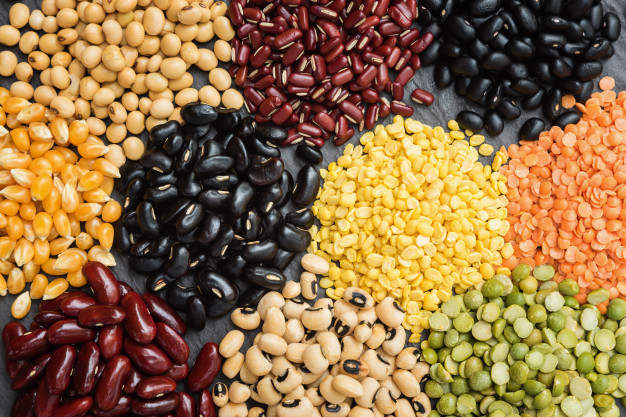top of mind news
- Restaurant Industry Gained 1.4 Million Jobs in May
- Tools for Restaurants Developing Employee Health Screenings
- Restaurant Purchasing Continues to Increase Amidst COVID-19
- Restaurants Blow Up Their Business Models To Thrive Post-Covid
Poultry
 For the holiday week ending May 30th, chicken harvests were 2.2% below the year prior, but estimates for last week’s slaughter were for another 2.7% year-over-year decline. Take note that both, weekly broiler kills as a percent of expected availabilities (from chicks placed), as well as forward looking availabilities (based on chicks placed) continue to indicate that further tightening of production is anticipated into early summer. The white meat sector has been widely mixed, with tender prices rising while breast meat fades, but wing prices have firmed. Seasonally, breast meat prices should continue to decline, but prices will likely remain above year ago levels. Leg quarter prices have been below year ago levels, but modest seasonal price increases are expected.
For the holiday week ending May 30th, chicken harvests were 2.2% below the year prior, but estimates for last week’s slaughter were for another 2.7% year-over-year decline. Take note that both, weekly broiler kills as a percent of expected availabilities (from chicks placed), as well as forward looking availabilities (based on chicks placed) continue to indicate that further tightening of production is anticipated into early summer. The white meat sector has been widely mixed, with tender prices rising while breast meat fades, but wing prices have firmed. Seasonally, breast meat prices should continue to decline, but prices will likely remain above year ago levels. Leg quarter prices have been below year ago levels, but modest seasonal price increases are expected.
Beef
Last week, beef production escalated sharply, estimated at 522.6 pounds, just 0.4% smaller than year ago levels. Moving forward, look for cattle harvests to remain in the 620k to 640k head range, but heavier carcasses will continue to add pounds to total production. Beef prices have been retreating as production escalates, but the declines have been most notable with the end meats, while the middle meats continue to show mixed sales. Lower prices are expected to continue. The beef trim and grinds have come under significant pressure, but the lean beef trim market remains firm. Still, lower lean prices are likely.
Pork
Pork production has picked up this early June, with last week’s 2.45 million head hog harvest (up 1.7% y/y) yielding 4.2% more pork than a year ago. Heavier hog carcasses are expected to continue to support output moving forward. Pork loin and butt prices were off sharply throughout last week, but the ham and belly primals were steady to higher. Anticipate upside price risk to occur for the ham primal as export interest is likely to emerge at these prices. Bellies are worthy of a look below $1.00/lb., before usual seasonal price increases this summer.
THE SEA
Seafood
The seafood markets have generally remained under downward pressure. This includes shrimp despite production challenges out of Asia due to COVID-19. U.S. shrimp imports during April were 5.9% more than the prior year. The elevated value of the U.S. dollar should fuel solid shrimp trade during the next several months. This factor and sluggish food service demand should weigh on the markets.
THE GARDEN
Produce
The tomato markets have remained relatively inflated. The Florida harvest has been erratic with output tracking near 20% plus below year ago levels at times. The chief harvest areas will transition northward during the next several weeks. And history suggests that the tomato markets may remain well supported in the near term. But the risk thereafter is likely to the downside for prices. Lettuce prices have been underpinned as of late by better demand and lackluster production. But, slack food service demand could weigh on prices this summer.
THE KITCHEN SINK
Dairy
CME cheese block prices are a record high and cheese barrel prices are the costliest in seven months. Cheese buying from food service companies has increased, following U.S. food box purchasing which has pushed prices to historic highs. April U.S. cheese exports were down 17.5% (y/y). The downside risk for the cheese markets from here is likely big. CME spot butter prices last week were the highest since December. Butter exports in April were up 6.2% (y/y) but still the smallest for the month since 2016. This year’s seasonal summer price climb for the butter markets may be tempered.
Grains
Pinto bean supplies remain limited due to the short harvest last fall. This is supporting prices which are well above year ago levels. 2020 crop planting is progressing but remains well behind in the biggest pinto bean state, North Dakota, which accounts for most of the annual output. Pinto bean prices could remain firm deep into summer.
Oil
After hitting a record low in April, nearby WTI crude oil futures on Friday were the highest in 13-weeks. As economic activity picks up in the U.S. and beyond, its boosting petroleum demand. But crude oil prices are still below 2019 levels.












